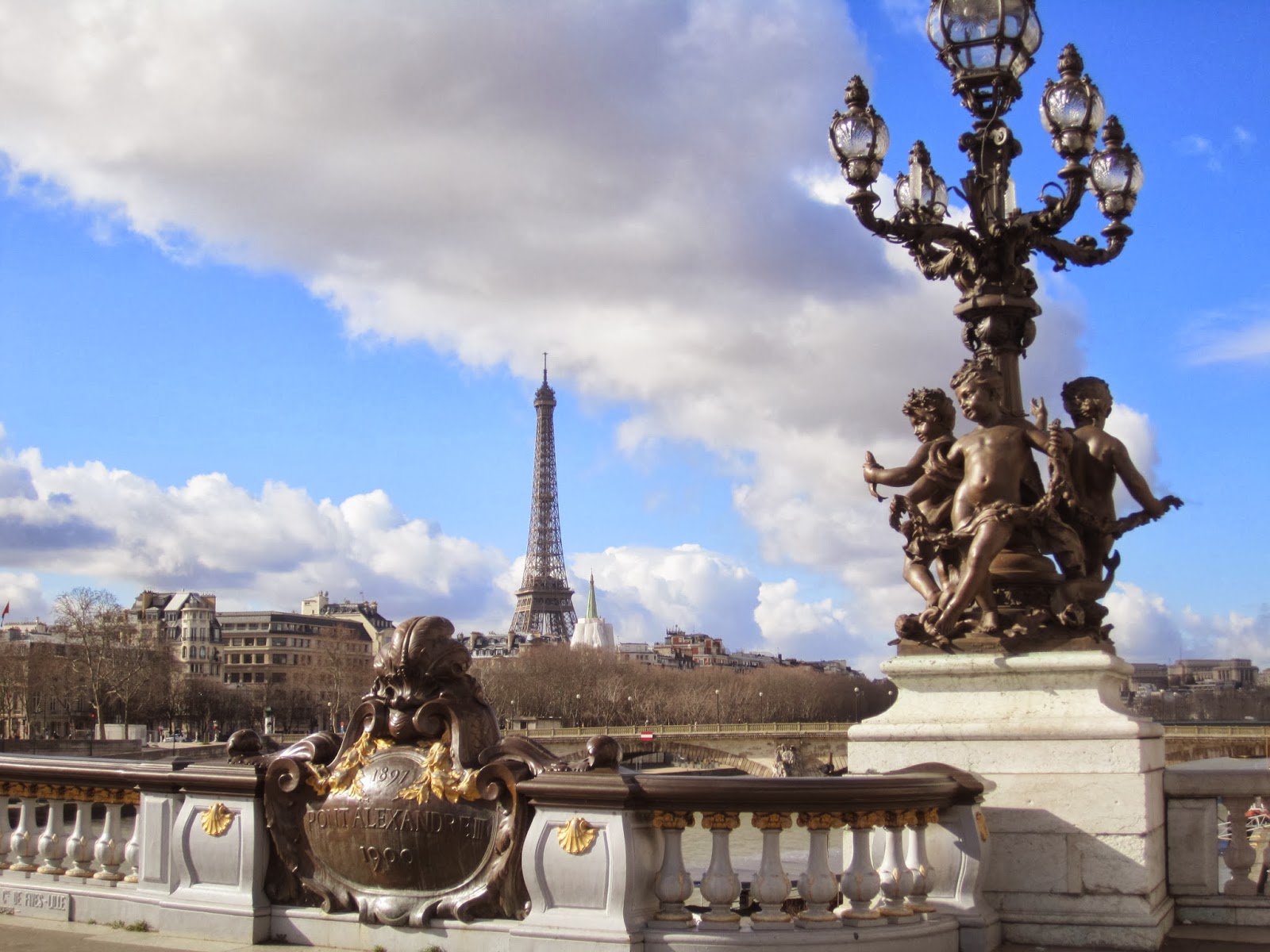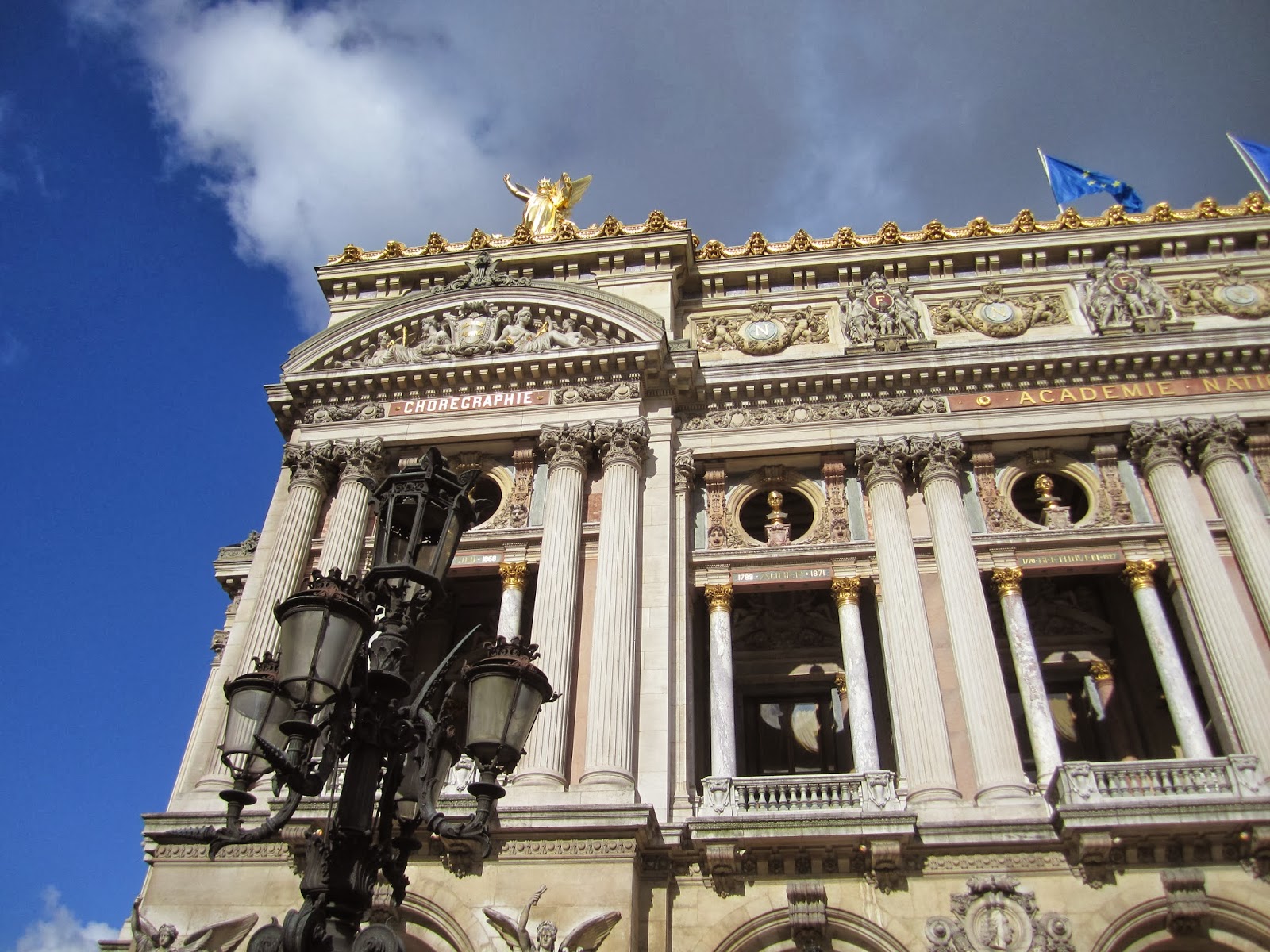After spending a lengthy amount of time walking around the Eiffel Tower and snapping up as many pictures as we could, our journey through gay ol' Paree continued.
We made our way up to the River Seine and walked alongside it for some time, before crossing to the other side of the river so that we could find Ave Marceau to lead us up to the Arc de Triomphe. While walking along the Seine, I saw this tunnel (in the below photograph) with a monument of a golden flame above it, and instantly recognized this location. This was the Pont de l'Alma.
On the night of August 31, 1997, a Mercedes-Benz carrying Diana, Princess of Wales and her boyfriend, Dodi al Fayed, drove into this tunnel underneath the Pont de l'Alma at dangerously high speeds as the vehicle's driver (who was later discovered to be driving intoxicated) attempted to evade photographers chasing the car on motorbikes. Inside the tunnel, the car crashed, instantly killing the driver and Dodi al Fayed. Princess Diana died of her injuries hours later at a nearby hospital.
The gold flame monument above the tunnel is an exact replica of the flame held in the hand of the Statue of Liberty in New York. It was erected here to commemorate Franco-American friendships; however, since the tragic accident of August 31, 1997, it has become an unofficial memorial to Diana, Princess of Wales. Below are hand-written inscriptions that people have left in memory of the late Princess.
One of the most remarkable things about Paris, and indeed something that stands out about many European cities to this California-bred American who lives in an area where it is rare to find buildings more than a hundred years old, is the beautiful architecture of the most ordinary street settings. I took the below photographs at various points on our walk up Ave Marceau. Paris truly did look like it does in the movies, with these beautiful buildings serving ordinary functions such as cafes, stores, offices, and apartments.
After walking for some time through beautiful Parisian neighborhoods, we made our way to the Arc de Triomphe. The Arc stands in the center of the Place Charles de Gaulle and was built to commemorate French soldiers who died in both the Revolutionary Wars (where Republican France fought off forces from Austria, Prussia, Russia, and other European monarchies who wanted to dislodge the revolutionary government that had seized control and abolished the French monarchy) and the Napoleonic Wars. Beneath the Arc lies France's Tomb of the Unknown Soldier from World War I. It has since become one of Paris' most iconic symbols, and has been a landmark in numerous historic moments, including the victory parade as Allied forces marched through Paris following the collapse of Nazi Germany's occupation.
The one disappointment about the Arc, as you can see, was the unattractive scaffolding. Oh well, that's what we get for visiting Paris in the off season, I suppose.
From the Arc de Triomphe, we made our way down the Champs-Élysées, arguably the most famous boulevard in Paris. It is notable for fashionable shops and has some of the most expensive real estate in the world.
Getting close to where the Champs-Élysées meets with the Seine, we came to the Pont Alexandre III (Alexander III bridge).
The bridge was constructed between 1896 and 1900 in honor of Tsar Alexander III of Russia, who helped arrange a long-standing military alliance with France during his reign. Alexander's son, Tsar Nicholas II, and his wife Empress Alexandra laid the foundation stone of the bridge during a state visit to France in 1896. Below is a photograph of Nicholas II parading through the streets of Paris during that same visit -
The bridge has since become yet another iconic Paris landmark, and is definitely one of the most beautiful bridges in the world. The gold statues at both ends of the bridge, as well as a perfect view of the Eiffel Tower, make it an extraordinary sight to take pictures at. I especially wanted to see this bridge, not only because of its beauty, but because of my love for Russian history and the Russian associations of this bridge. Fun fact: this bridge was drawn into the 1997 animated film Anastasia and is the scene of the final climactic battle between Anastasia and Rasputin (Tsar Alexander III, who the bridge was built in honor of, was the grandfather of the real-life Anastasia).
Below: the Pont Alexandre III as it appears in the film Anastasia, with a real photograph of the bridge below it.
Here I am standing on the Pont Alexandre III with the Eiffel Tower behind me.

Our self-guided tour of Paris continued as we made our way along the Seine up to the Place de la Concorde.
The giant obelisk in the Place de la Concorde is the Obelisk of Luxor, which was given as a gift to France by the Egyptian government in 1833.
From the Place de la Concorde, we made our way up to the Paris Opera House; the building itself is called the Palais Garnier, but is commonly referred to as the Paris Opera House. It is most famously remembered for being the setting of Gaston Leroux's novel The Phantom of the Opera as well as the setting of the famous Broadway musical by Andrew Lloyd Weber based on Leroux's novel.
Busts of Beethoven and Mozart on the facade of the Opera House.
Facade of the Paris Opera House.
After catching these glimpses of the Opera House, we decided to stop for a lunch break and rest our weary feet after a long night of bus travel and a long morning of sightseeing. Part 3 of my Paris excursion will be coming shortly.










































No comments:
Post a Comment